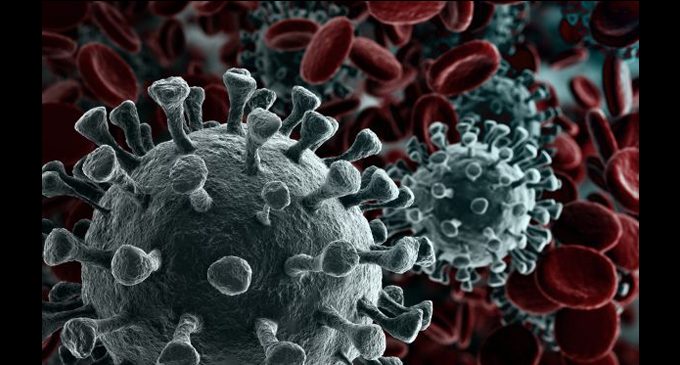Separating fact from fiction about the coronavirus (COVID-19) pandemic

Since the coronavirus first started making news in January, rumors, myths, and fabrications started flooding our email inboxes and Facebook newsfeeds. Although there has been helpful information shared via social media, there has also been a lot of misinformation that is causing fear and, in some instances, risky behaviors.
The Chronicle staff has reviewed information on several trusted sites and culled the facts from the fiction. Here is some of the information we have checked out.
Myth: Warm weather will kill the coronavirus.
Fact: According to the World Health Organization, COVID-19 “can be transmitted in ALL AREAS, including areas with hot and humid weather.” However, it is too early to tell if the spread of the new coronavirus that causes COVID-19 will be dampened by warm weather. The viability of the virus at different temperatures has not been studied.
Myth: The coronavirus was deliberately created by people.
Fact: Viruses can change over time. Occasionally, a disease outbreak happens when a virus that is common in an animal such as a pig, bat or bird, undergoes changes and passes on to humans. This is likely how the new coronavirus came to be.
Myth: Sipping warm water every 15 minutes will help prevent the virus.
Fact: There is no research to support this. Neither will gargling with salt water, garlic water, vinegar water, or lemon water, although salt water may relieve a sore throat. NEVER gargle or drink bleach as it can kill you.
Myth: Eating bananas can prevent coronavirus.
Fact: Although bananas are a nutritious fruit, they cannot protect against the virus.
Myth: An early sign of coronavirus is the loss of smell and taste.
Fact: Many doctors around the world have reported that those infected with the virus have experienced a loss of smell and taste.
Myth: Corona beer sales dropped dramatically due to the coronavirus.
Fact: This is not true. There is no connection between Corona and coronavirus.
Myth: We can stop “social distancing” on Easter Sunday, April 12.
Fact: COVID-19 continues to infect a large number of people and we are nowhere near the point when we can ease up on social distancing. Coughs or sneezes or close contact with those who have the virus, even if they are not yet experiencing symptoms, is still a high risk for spreading the disease. President Donald Trump has extended the social distancing recommendation through April 30.
Myth: The virus can live on plastic grocery bags for up to a week.
Fact: According to a recent study published in the New England Journal of Medicine, SARS-CoV-2, the virus that causes COVID-19, can live in the air and on surfaces between several hours and several days. The study found that the virus is viable for up to 72 hours on plastics, 48 hours on stainless steel, 24 hours on cardboard, and 4 hours on copper. It is also detectable in the air for three hours. But what’s more important is the amount of the virus that remains. It’s less than 0.1% of the starting virus material. Infection is theoretically possible but unlikely at the levels remaining after a few days. You are more likely to catch the infection through the air if you are next to someone infected than off of a surface.
Myth: You can get COVID-19 from pumping gas.
Fact: The virus can be spread from contact with any surface containing the virus and certainly, any item that is frequently touched by many people – gas pump handles, ATM pads, door knobs, handrails, light switches, – can convey the virus. You should use sanitizers after you pump gas or touch any other surfaces in public places and wash your hands thoroughly with soap and water when you return home.
Myth: You can order online a kit to test yourself for the virus.
Fact: There is no self-test available nor any vaccine or over-the-counter treatment. If you experience the symptoms of COVID-19 – fever, cough, shortness of breath – call your healthcare provider to see if you need to be tested or need to go to an emergency room. Beware of any “cures” in emails or in social media posts. They are preying on fears and misinformation.
Myth: Wearing a face mask will protect you from the disease.
Fact: For the general public without respiratory illness, wearing lightweight disposable surgical masks is not recommended. Because they don’t fit tightly, they may allow tiny infected droplets to get into the nose, mouth or eyes. Also, people with the virus on their hands who touch their face under a mask might become infected. People with a respiratory illness can wear these masks to lessen their chance of infecting others.
Myth: You need to sing the Happy Birthday song when you wash your hands.
Fact: Washing your hands frequently and thoroughly, using soap and water for at least 20 seconds, which is about two choruses of the Happy Birthday song (or one verse of “This Little Light of Mine”), is the best method for preventing infection from the virus. Use alcohol-based hand sanitizer if soap and water aren’t available. Avoid touching your eyes, nose or mouth with unwashed hands.
For more information on COVID-19 and how to stay safe during the pandemic, here are some of the sites we recommend for more information:
*Johns Hopkins University and Medicine: www. https://coronavirus.jhu.edu/
*The Centers for Disease Control and Prevention: www.cdc.gov/oronavirus/2019-ncov/index.htm
*Snopes: https://www.snopes.com/collections/new-coronavirus-collection/










